Welcome to the website
of Haus der Kunst in Easy Read!
Haus der Kunst is a public museum in Munich.
Here you can find important information in Easy English.
1. Where is Haus der Kunst?
The address is:
Prinzregentenstraße 1
80538 München
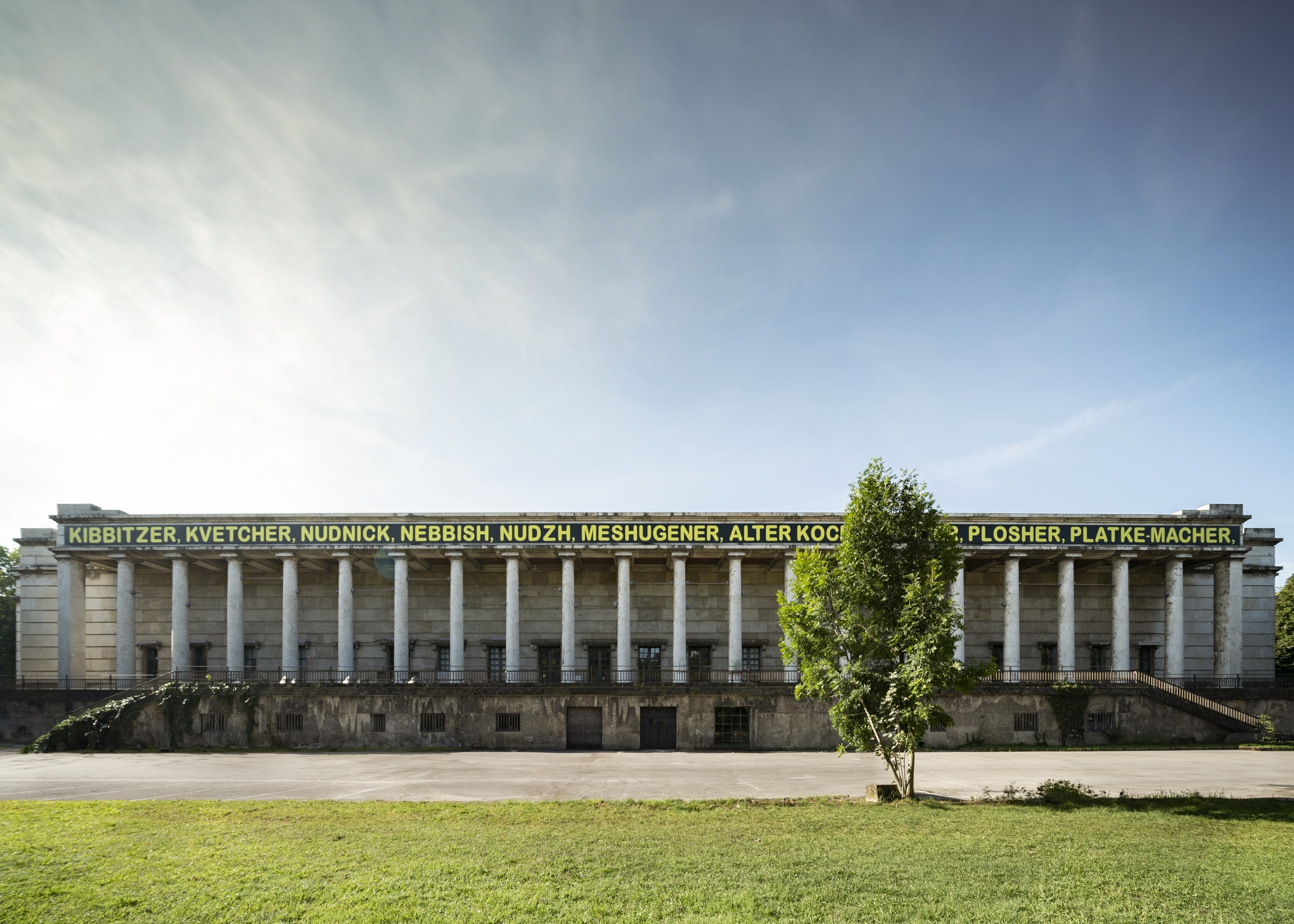
2. When is Haus der Kunst open?
Haus der Kunst is open on these days:
- Monday, Wednesday, Friday, Saturday and Sunday: from 10 am to 8 pm.
- Thursday: from 10 am to 10 pm.
- Tuesday is closed.
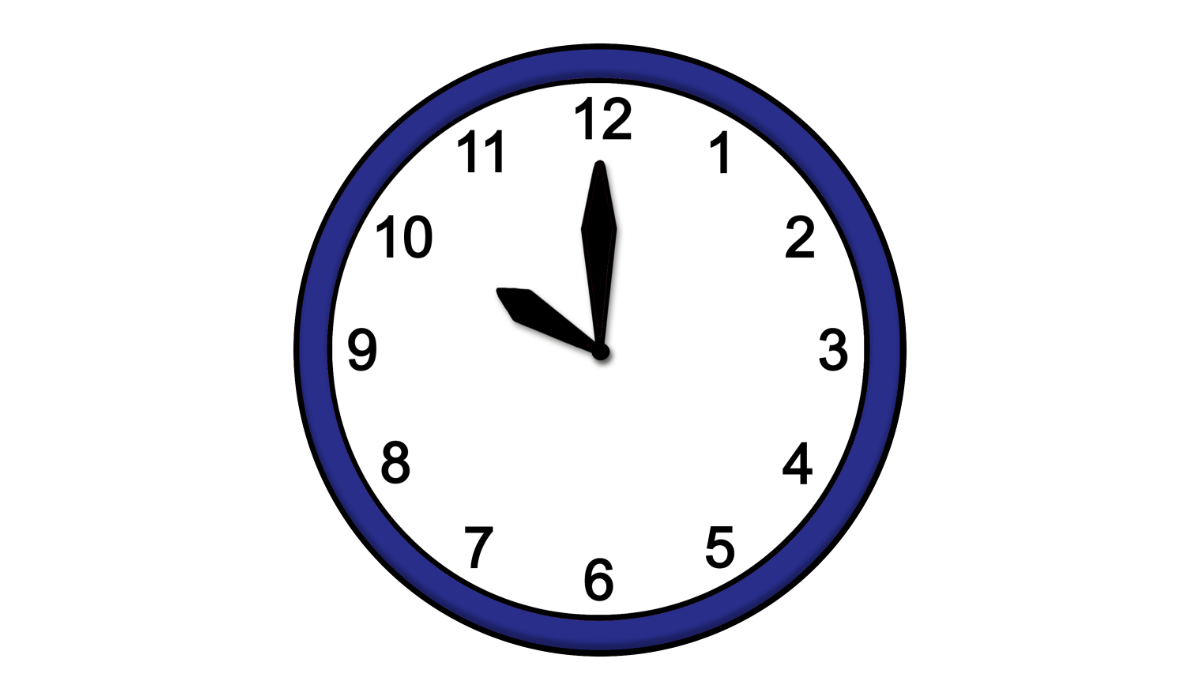
3. how much does admission cost?
There are two different types of tickets:
House- Ticket Large with time slots and House- Ticket Small.
► House Ticket Large with time slots
That's how you say it: Laatsch.
It's English and means: big.
You need this ticket for the exhibition "For children. Art stories since 1968"
It is also valid for all other exhibitions.
The ticket is valid for a specific time.
You select this time when you buy the ticket.
It costs
- 15 euros
- 11 euros reduced
- 5 euros for children aged 2 and over, pupils and students
- There is also a family ticket for 35 euros: It is valid for 2 adults and 3 children.
► Haus-Ticket Small
This Ticket is for the exhibition Cyprien Gaillard. Wassermusik and Sandra Vásquez de la Horra. Soy Energía
It costs:
- 10 euros
- 8 euros reduced
- 5 euros for students and pupils
► Who gets a discounted ticket?
For example:
- Pensioners
- People with disabilities with a disability card
and from a degree of disability of 50 ( GDB 50 )
► Who gets a free ticket?
- Children under the age of 12 (only Haus-Ticket Small)
- Owners of an annual ticket from Haus der Kunst
- Members of the Friends of Haus der Kunst
- Refugees with a residence permit
- Students of the Academy of Fine Arts or art history students
- Accompanying persons of people with severe disabilities with ID B
- For all visitors:On the last Friday of every month, admission is free from 4 pm.The museum is then open until 10 pm.
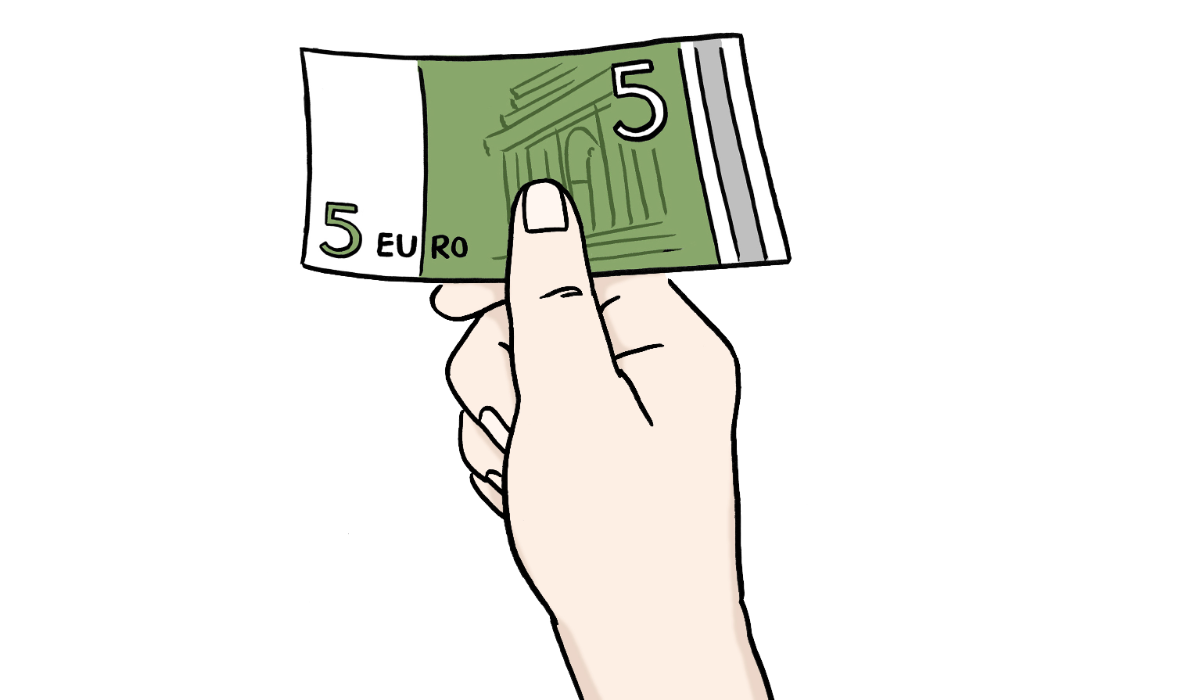
4. Do you have any questions about your visit?
Don't know which ticket you need?
Then give us a call!
Telephone: 089 - 211 27 113
Phone time: from Monday to Friday 10 am to 5 pm.
Or send us an e-mail.
E-mail: mail@hausderkunst.de
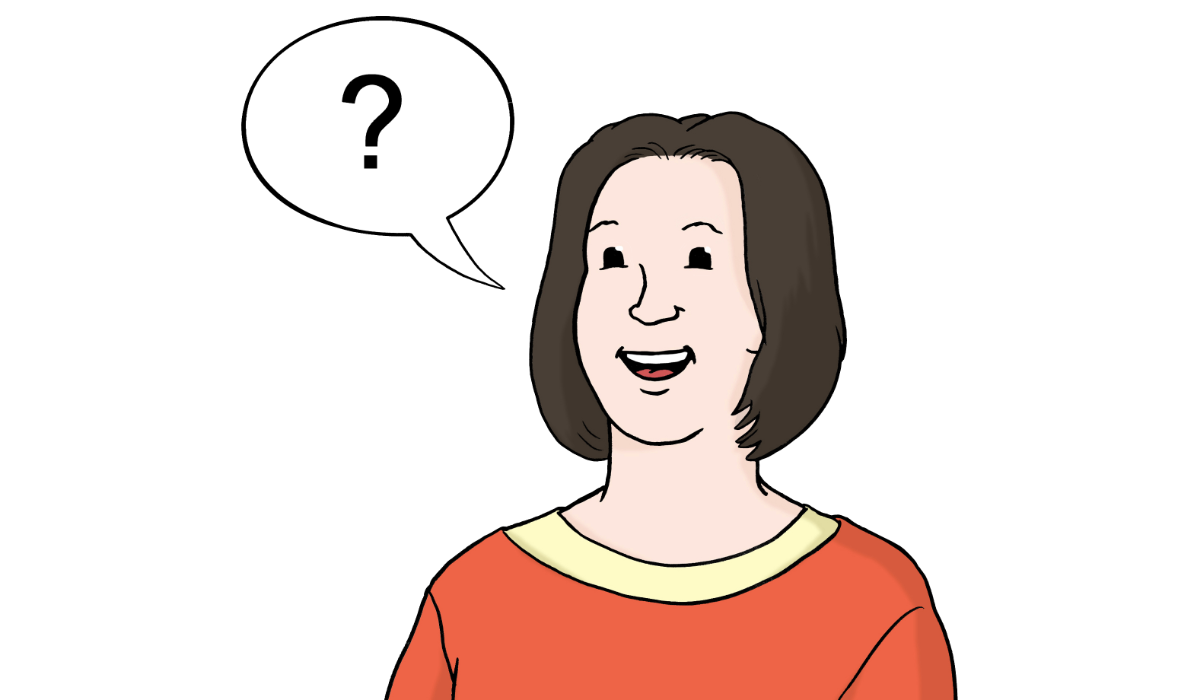
5. How to get to Haus der Kunst?
- Bus: Bus 100 to the bus stop: Königinstraße
- Underground:
- U 4/5 to stop: Lehel and then by foot.
Or take Tram 16 in the direction of Effnerplatzto the stop: Nationalmuseum / Haus der Kunst. - U 3/6 to the stop: Odeonsplatz.
Then continue by Bus 100 Richtung in the direction of Königinstraße.
- U 4/5 to stop: Lehel and then by foot.
- S-Bahn: S-Bahn to Isartor.Then take Tram 16 in the direction of Effnerplatz to the stop Nationalmuseum / Haus der Kunst.
- Car: Behind Haus der Kunst there is a large car park for our visitors.
The car park costs a fee.
There are 2 free disabled parking spaces.
Please come with an accompanying person
to make your way from the car to the museum entrance.
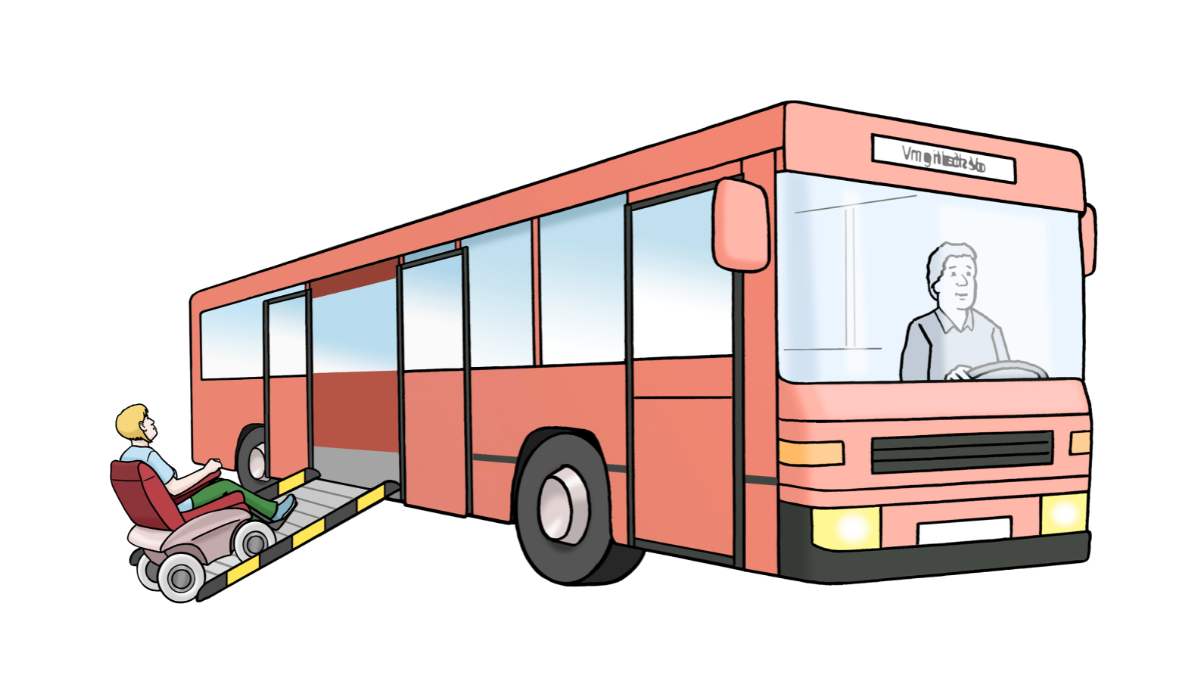
6. What is Haus der Kunst?
Das Haus der Kunst ist ein öffentliches Museum.
Es hat keine eigene Sammlung von Kunst-Werken.
Es gibt immer wechselnde Ausstellungen zu sehen.
It is an important museum for contemporary art.
Contemporary art is the art of people who are still alive.
Or who have not been dead for long.
The museum staff research the history of contemporary art.
There are always various events accompanying the exhibitions.
For example: concerts, lectures and performances.
Performances are presentations with the body.
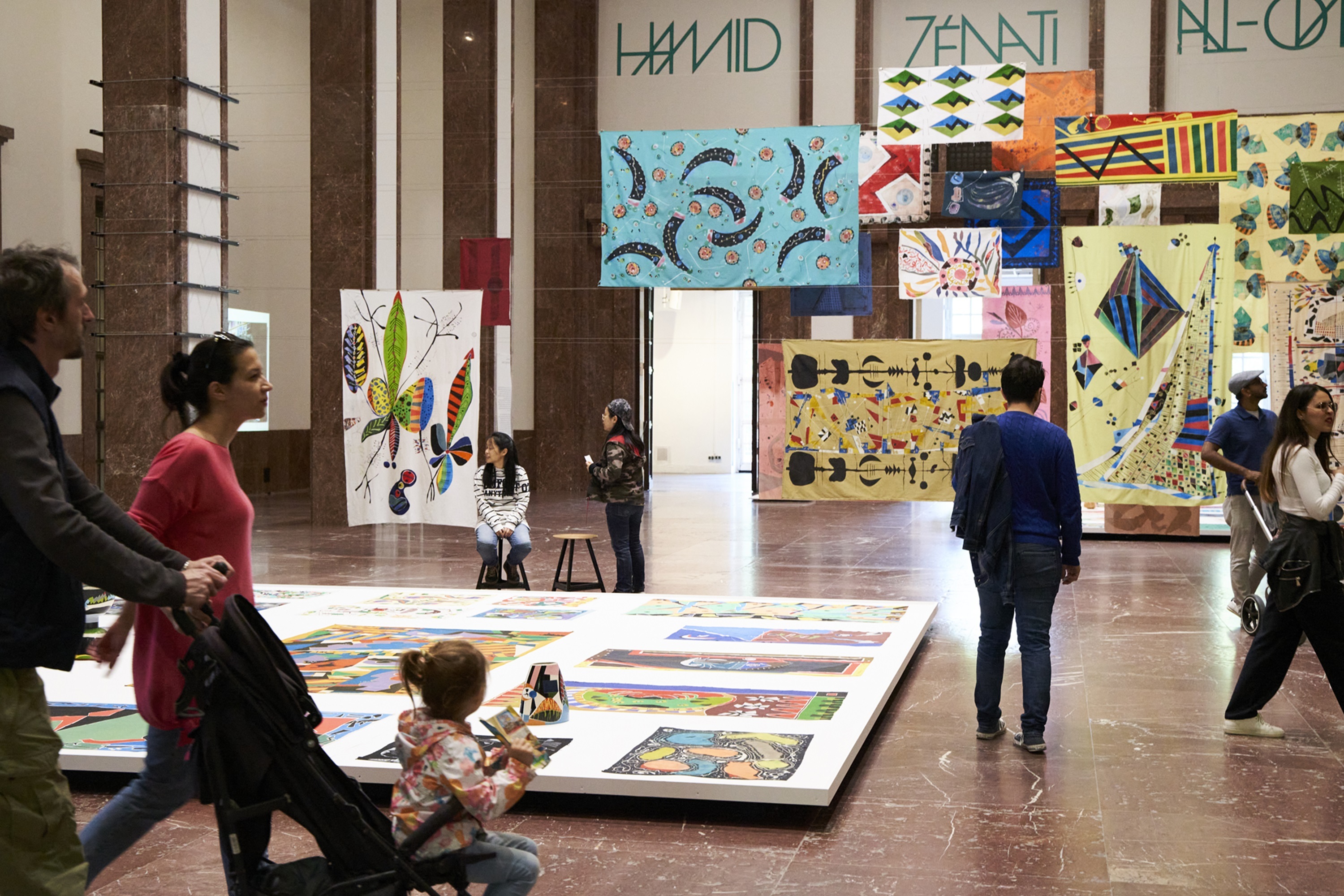
7. What is important to us?
This is important to us:
► Diversity.
Diversity means:
There are many different people.
► Equality.
This means: All people have the same rights.
► Inclusion.
This means: Everyone can take part.
People with disabilities and people without disabilities.
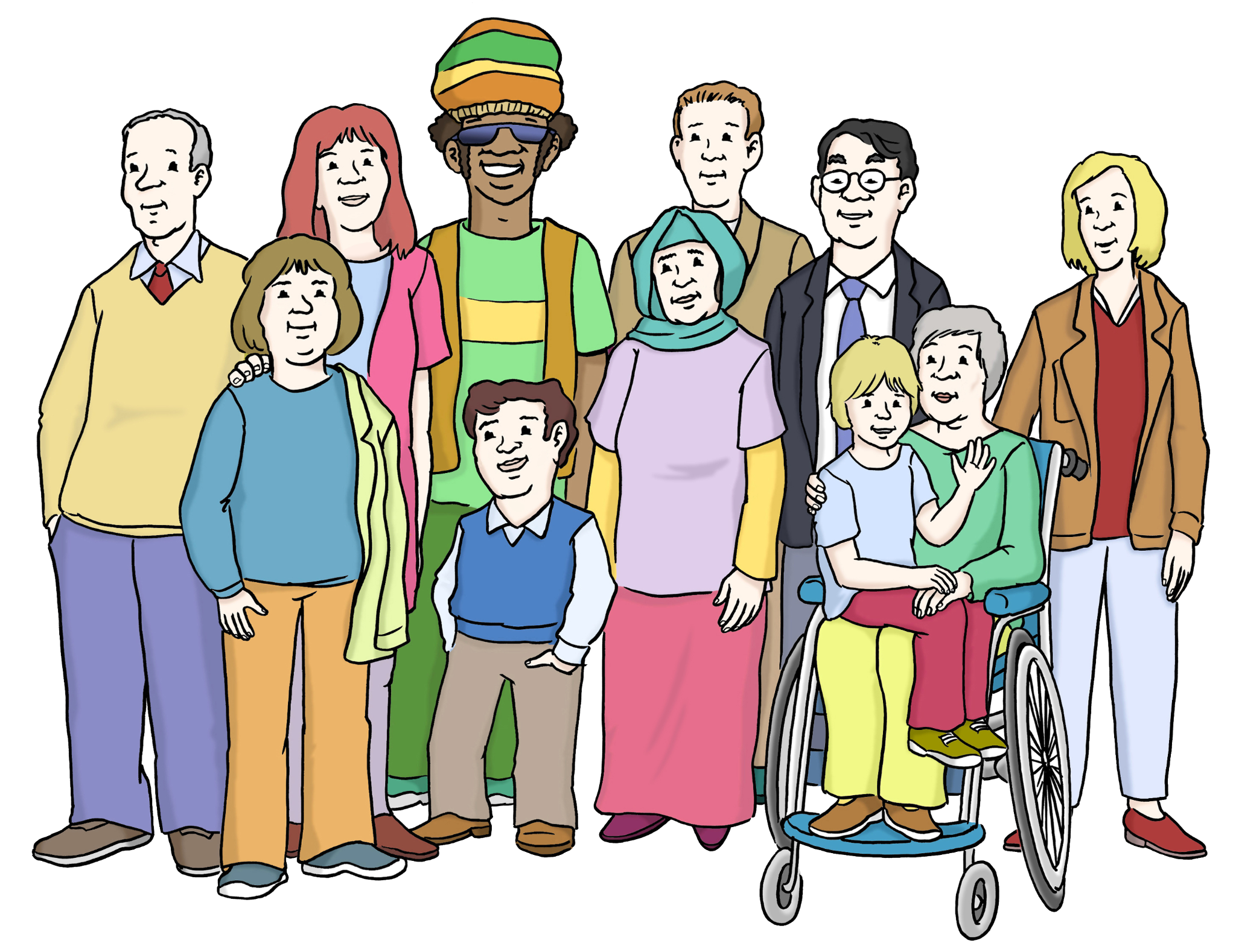
Overall, this means to us:
Everyone is treated equally here:
- Visitors
- Artists
- Employees
All people have the same rights and belong here.
For example:
- Old people and young people.
- People with disabilities
- and people without disabilities.
- People of different faiths.
- People from another country and no matter their skin color.
- Lesbian and gay people.
- All people, regardless of their gender:
- Women, men, inter people, trans-people.
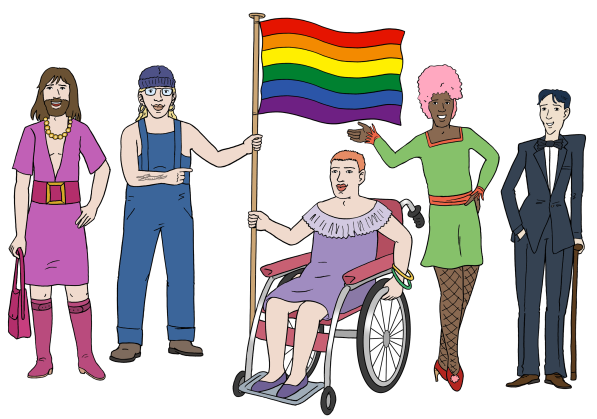
8. What services are available for our visitors with disabilities?
- We have wall texts in Easy Read (in German).
- We organise guided tours in German sign language for which there are fixed dates.
- We organize guided tours for blind and visually impaired people on fixed dates.
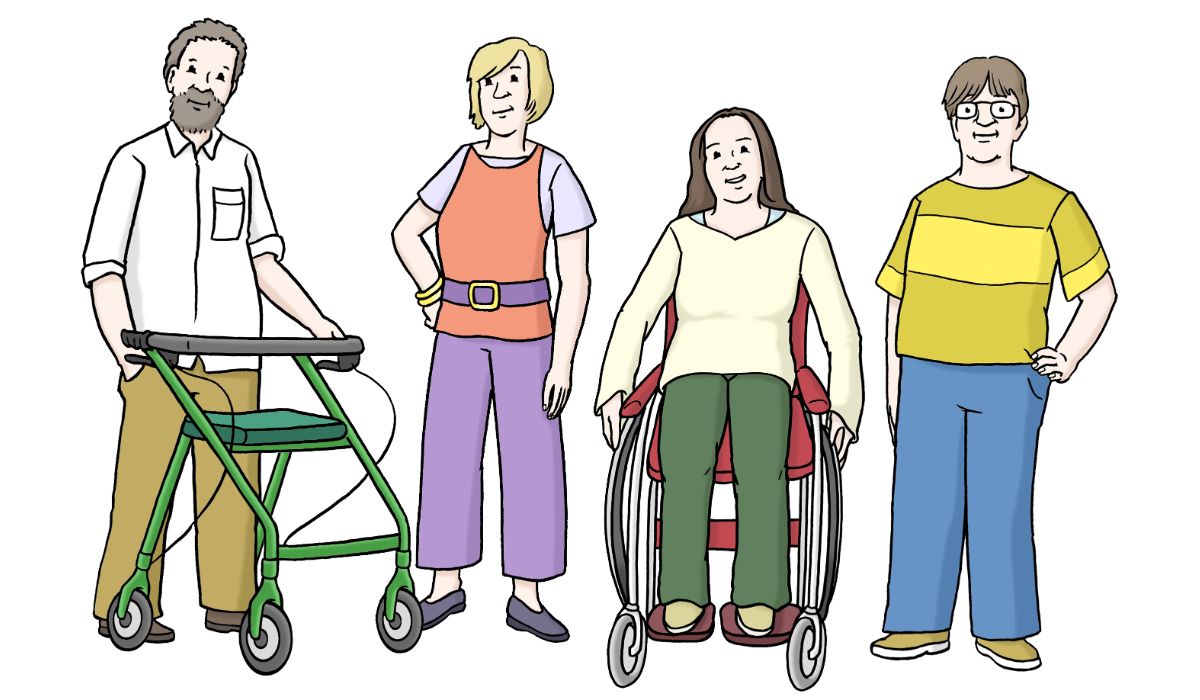
9. Important to know:
- We lend out wheelchairs and chairs free of charge at the ticket desk.
You can take the lift to every floor. - There are toilets for wheelchair users on the ground floor.
- There are toilets for wheelchair users on the ground floor.
- We do not have a guidance system for visually impaired people.
Please come with an accompanying person!
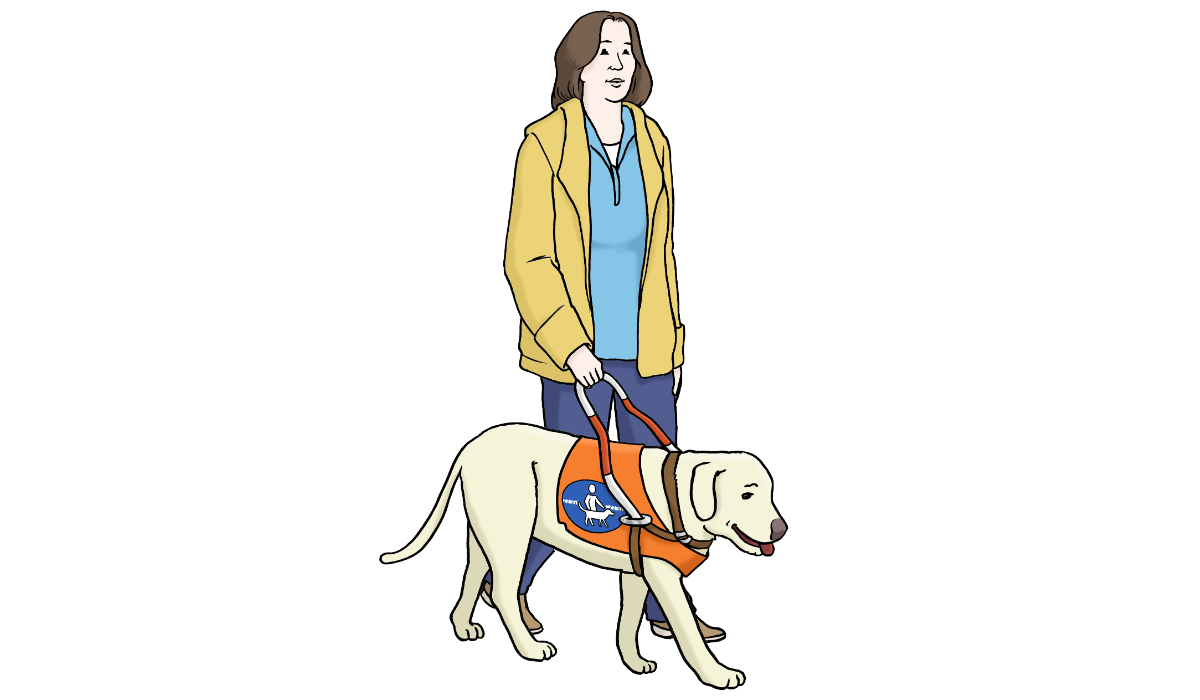
10. Which exhibitions can I visit?
► For Children. Art stories since 1968
In the exhibition “For Children. Art stories since 1968” you can see art for children.
This art has been made for children since 1968.
But it is also important for adults.
Because it deals with topics that are important for everyone.
Many even for a lifetime.
For example, it is about
- people living together
- Politics and society
- Money and work
- Nature and the environment
- Technology and the future
It's also about
- What does it mean to be a child today?
- What is the significance of childhood in our society?
- Can we learn differently through art?
- Is childhood over at some point?
- Or will it always remain a part of us?
In the exhibition you will see works of art.
They are by more than 20 artists from all over the world.
You can look at the artworks.
Often you are also allowed to do something with them, such as play with them.
You can think about the artworks.
You can learn something new.
The exhibition is in many places in the house.
One artwork extends outside onto the terrace by the Eisbach.
There is no specific route through the exhibition.
You can start anywhere.
Let yourself be surprised.

► Ei Arakawa-Nash, Mega Please Draw Freely, 2025
The artist of this work is Ei Arakawa-Nash.
This artwork is a collaborative work.
Everyone can take part.
Get your favourite colours.
And then you can draw directly on the floor.
The idea for this artwork comes from Japan.
A group of artists came up with the idea after the Second World War.
The group is called Gutai.
The artists in this group wanted to try something new.
In 1956, they organised a special art event.
They invited children and adults to a park in Japan.
Everyone was allowed to paint together on a large canvas.
This turned art into a joyful experience.
Everyone made art together.
Children and adults.
The artist Ei Arakawa-Nash also likes Gutai art.
His artwork in the Haus der Kunst is a reminder of this.
There are unreal pine trees in the centre hall.
They are reminiscent of the park in Japan.
Ei Arakawa-Nash often makes new art from old ideas.
He loves art that involves many people.
His art has a lot of energy.
It is created in the moment.
And without a plan.
This work of art is about free participation.
It's about your own ideas and a good feeling.
And a safe place
Sometimes it's a bit chaotic.
That's allowed!
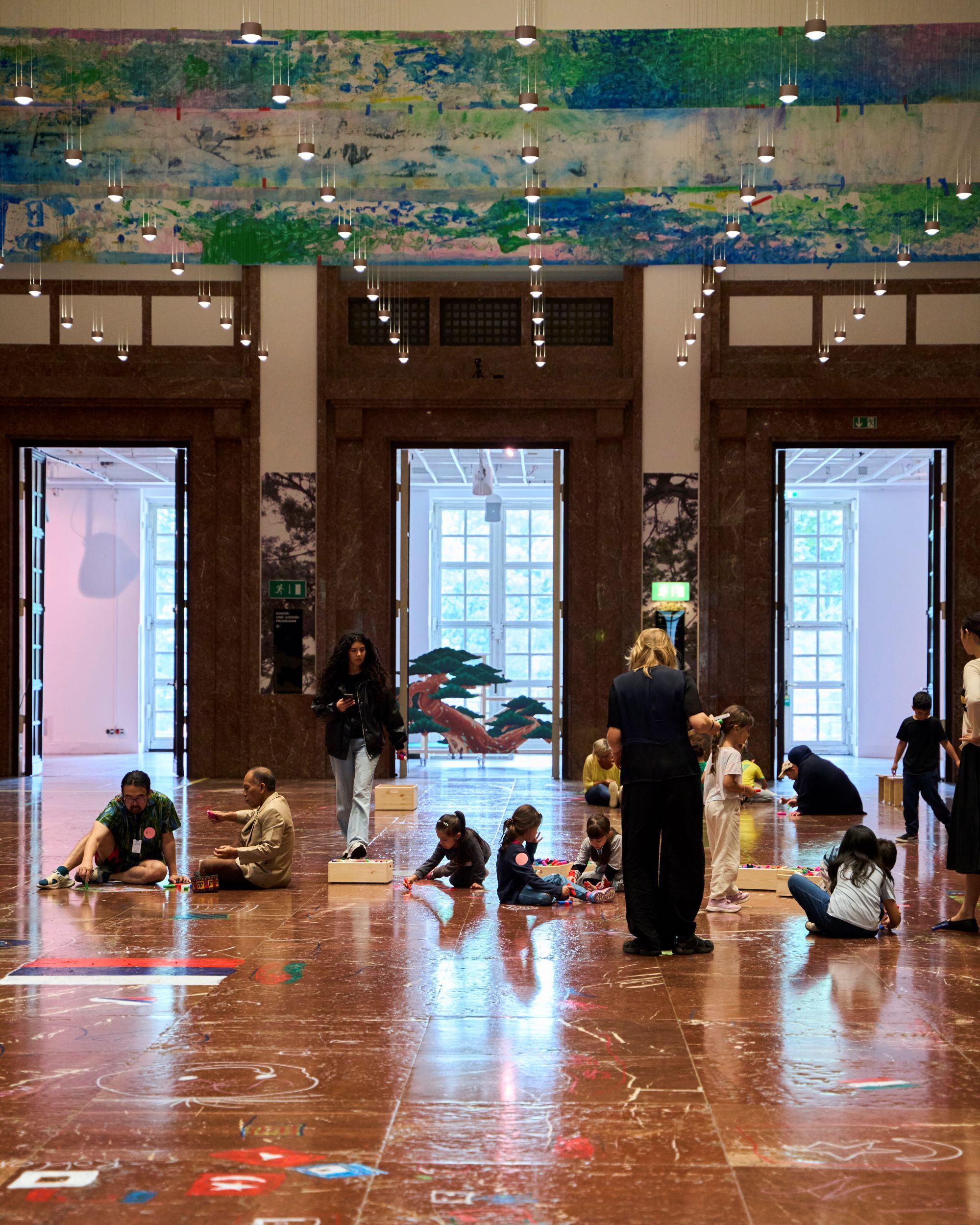
► KOO JEONG A, HAUS DER MAGNET, 2025
KOO JEONG A comes from South Korea.
The name is pronounced: Ku Jong A.
Koo has created a new work for the Haus der Kunst.
It is part of the exhibition “For Children. Art stories since 1968.”
The work in Haus der Kunst is made of wood.
It looks like a magnet in the centre.
It is called HAUS DER MAGNET.
That is reminiscent of: House of Art.
The surface is painted with a luminous colour.
It stores the sunlight.
When it gets dark:
Then the work of art lights up by itself.
The magnet symbolises energy.
Koo is interested in Qi.
That's how you say it: Chi.
It's a word from Asia.
It means: life energy.
When you ride a skateboard, you can feel this energy through the speed.
And in your movements.
You also feel life energy in the light, which changes over the course of a day.
This is how you can see, feel and experience art.
Even if you don't skateboard:
Then you can still experience the work for yourself:
There are seating areas at the side.
There you can watch, rest or socialise with others.
The artwork brings many different people together:
No matter how old they are.
Important notes:
The artwork may only be used at your own risk.
Please use the centre entrance for skateboarding.
All others please use the side entrances.
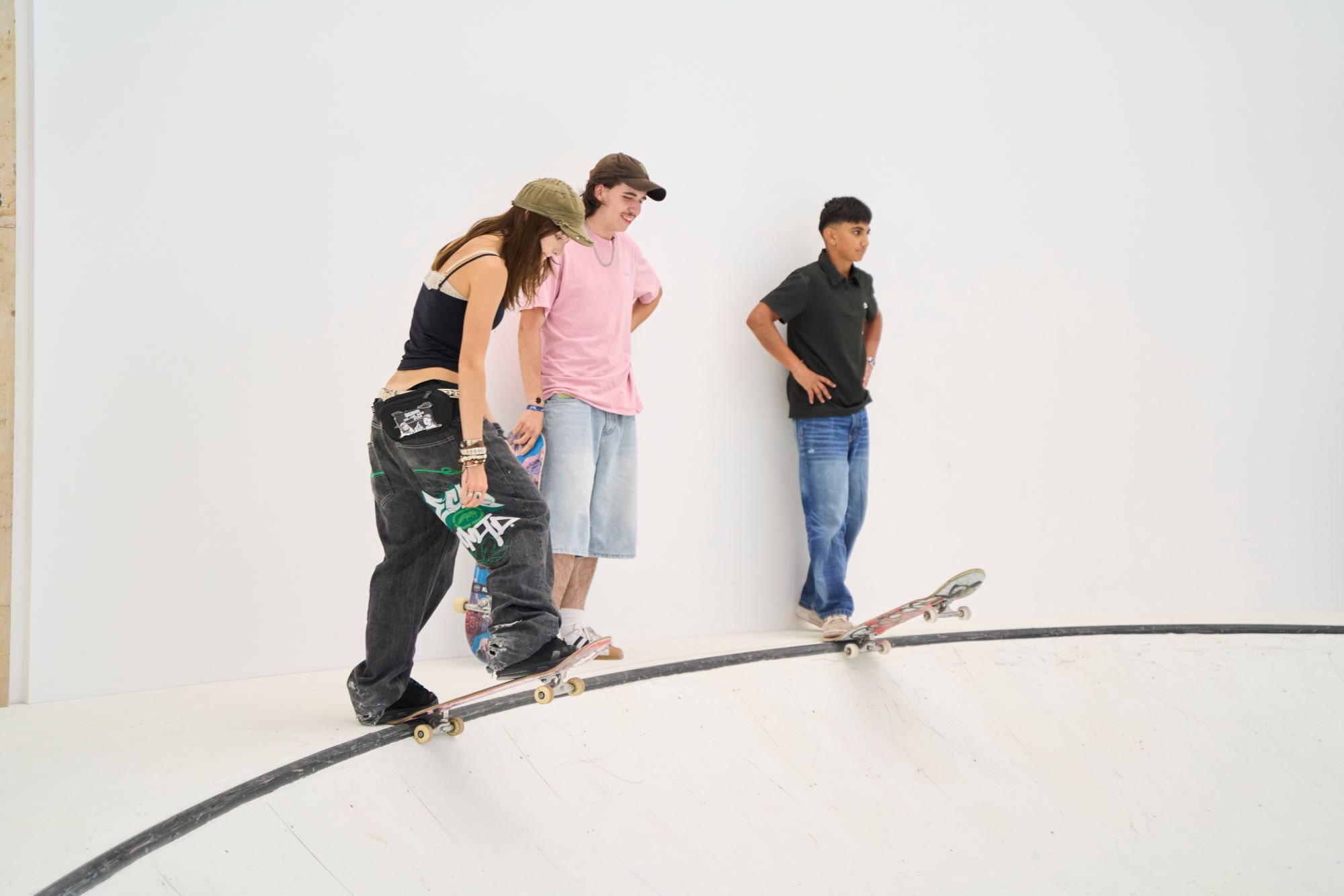
► KEKS
In the late 1960s, there was a group of young people in Munich.
They were artists and art teachers.
They wanted to completely change the way art was taught.
The group called itself KEKS.
That stands for:
- Art
- Education
This is a technical term for working with young people.
When you teach them something for life. - Cybernetics That's how you say it: Cybernetics.This is the specialised knowledge of how people and technology work together.
- SociologyThis is the science of how people live together.
The people at KEKS had the opinion:
The old art lessons were boring.
That's why they left the classroom.
They made art outside in the city.
Because the city is a place where you can experience and learn a lot.
The KEKS Group said:
- Art is not just a finished picture or an object.
- Art is a process that is open.It is like something that lasts longer and has a process.
- Art is created through action, play and everyday life.
- Art is for everyone.
Their art actions were spontaneous.
That means:
They started all of a sudden.
Nobody knew beforehand.
KEKS art events were always outside in the city.
And everyone could take part.
KEKS worked with simple materials.
They wanted to show:
You can make art without spending a lot of money.
It was important to think, participate and try things out.
KEKS did not want lessons with rules and grades.
There were to be no boring lectures.
There should be spaces for experiencing, trying out and participating.
The group wanted to make art lessons better.
They wanted to change schools.
And change society.
In 1970, KEKS was invited to Italy.
They were to take part in the 35th Biennale in the city of Venice.
This is a very important art exhibition.
KEKS did something completely new there:
For the first time, there was a programme for children.
KEKS became world-famous as a result.
Two years later, KEKS also came to Haus der Kunst in Munich.
There they set up their own children's and youth centre.
It was a space to participate and not just to watch.
The exhibition “For children. Art stories since 1968” shows:
That's how important the KEKS group was.
It was the beginning of much.

► TUNE
TUNE is the name of a programme series at Haus der Kunst.
The programme is a mixture of sound, music and visual art.
It takes place almost every month as a live programme.
A different artist is always invited to take part in the programme.
They then play a concert on 2 evenings.
Or they put on a performance.
Before there is always a joint discussion.
TUNE is also an exhibition.
An artist receives a commission for this.
This happens about twice a year.
The artist is then invited to come up with
a sound art work for the Terrassen-Saal.
This is a large room in the Haus der Kunst.
You can only hear this sound art work.
You can't see it.
The content of TUNE fits in with the Haus der Kunst programme.
They deal with similar themes.
It is about small and big experiences in our lives today.
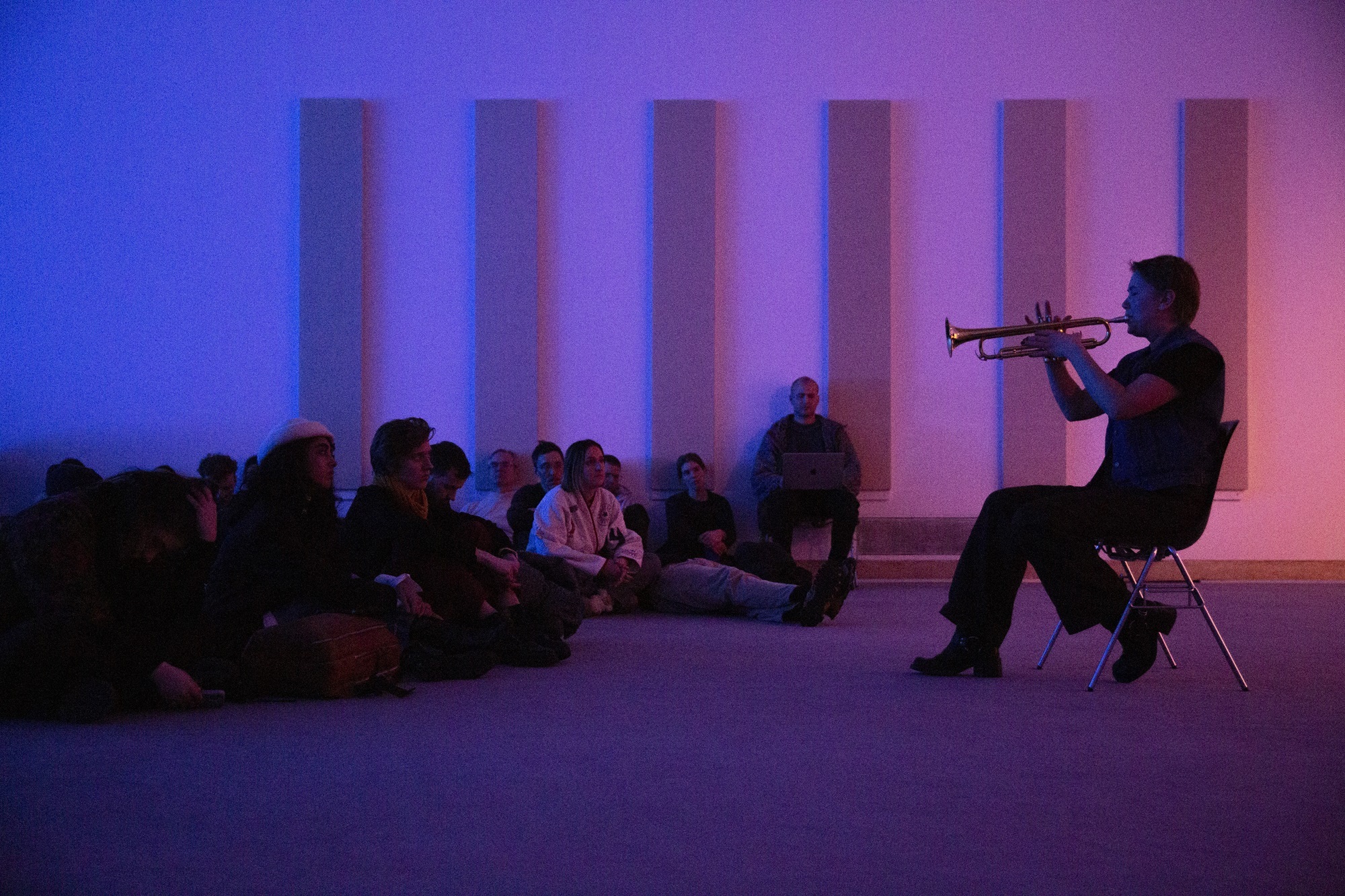
► Archive Gallery
There is always an exhibition to visit in one room.
It is on the ground floor.
It is called: Archive Gallery.
An archive is a room.
In it you collect old documents and things.
For example: Photos, films, newspaper articles or furniture.
The Archive Gallery revolves around the history of Haus der Kunst.
The entry for the Archive Gallery is free.
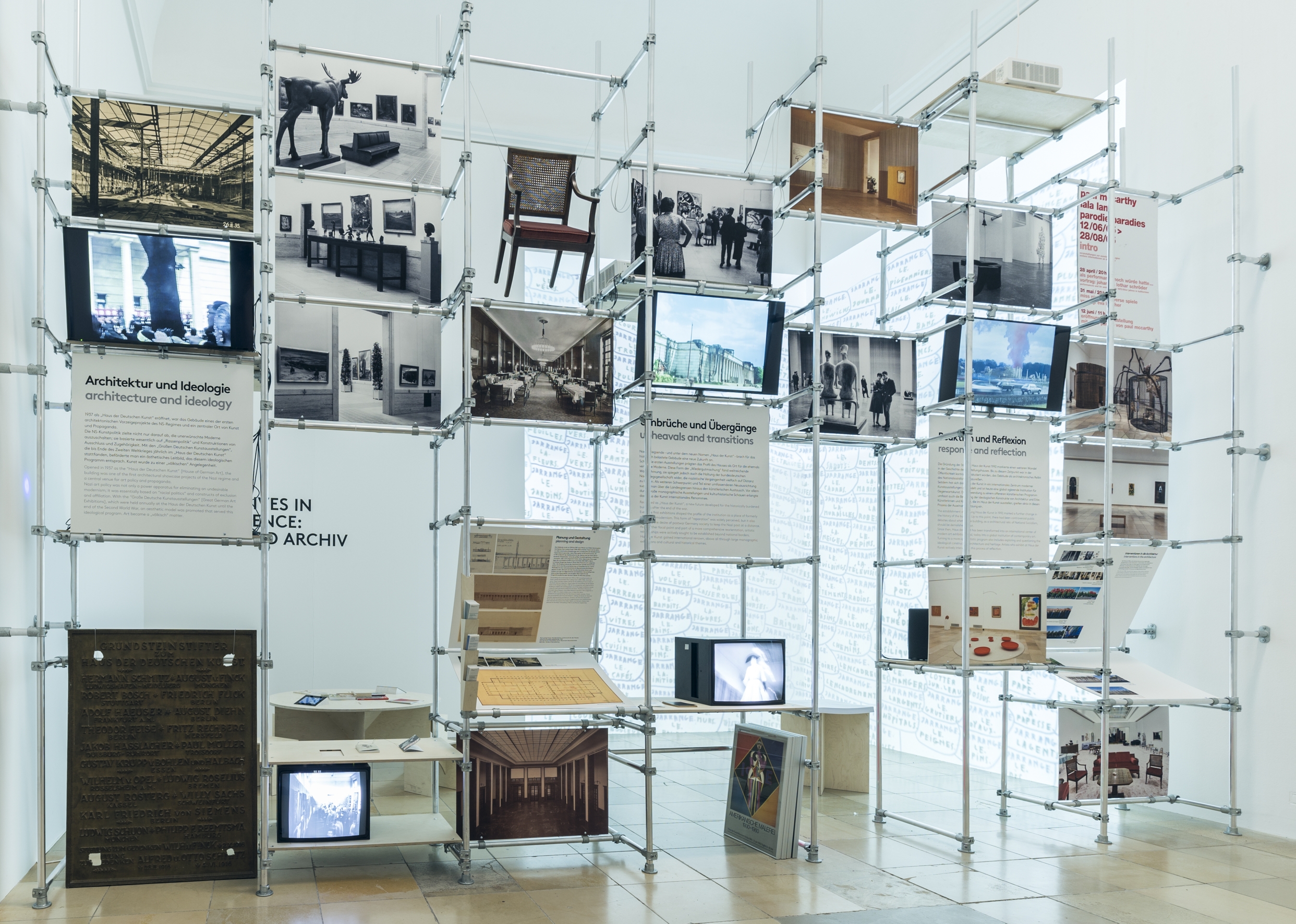
► Exhibition of Exhibitions
This exhibition is like a book you can walk into.
It shows photos of exhibitions at Haus der Kunst.
You can see how the Haus der Kunst has changed.
Today it is a major centre for contemporary art from all over the world.
The Haus der Kunst Foundation was established in 1992.
A foundation wants to achieve something specific.
It spends money, for example.
The aim of the Haus der Kunst is:
Art of today should be shown here.
Haus der Kunst has organised more than 300 exhibitions since 1993.
Many of these exhibitions were special.
Because they have showcased new art,
by people they were not yet familiar with.
Through these exhibitions, people see the history of art differently.
There were ideas about how to organise exhibitions.
These ideas were new and different.
This exhibition is part of a work.
Things are collected again and again.
Photos, for example.
That's called archiving.
The exhibition helps you to think:
About the history and exhibitions of Haus der Kunst.
But it also helps if you want to look to the future.
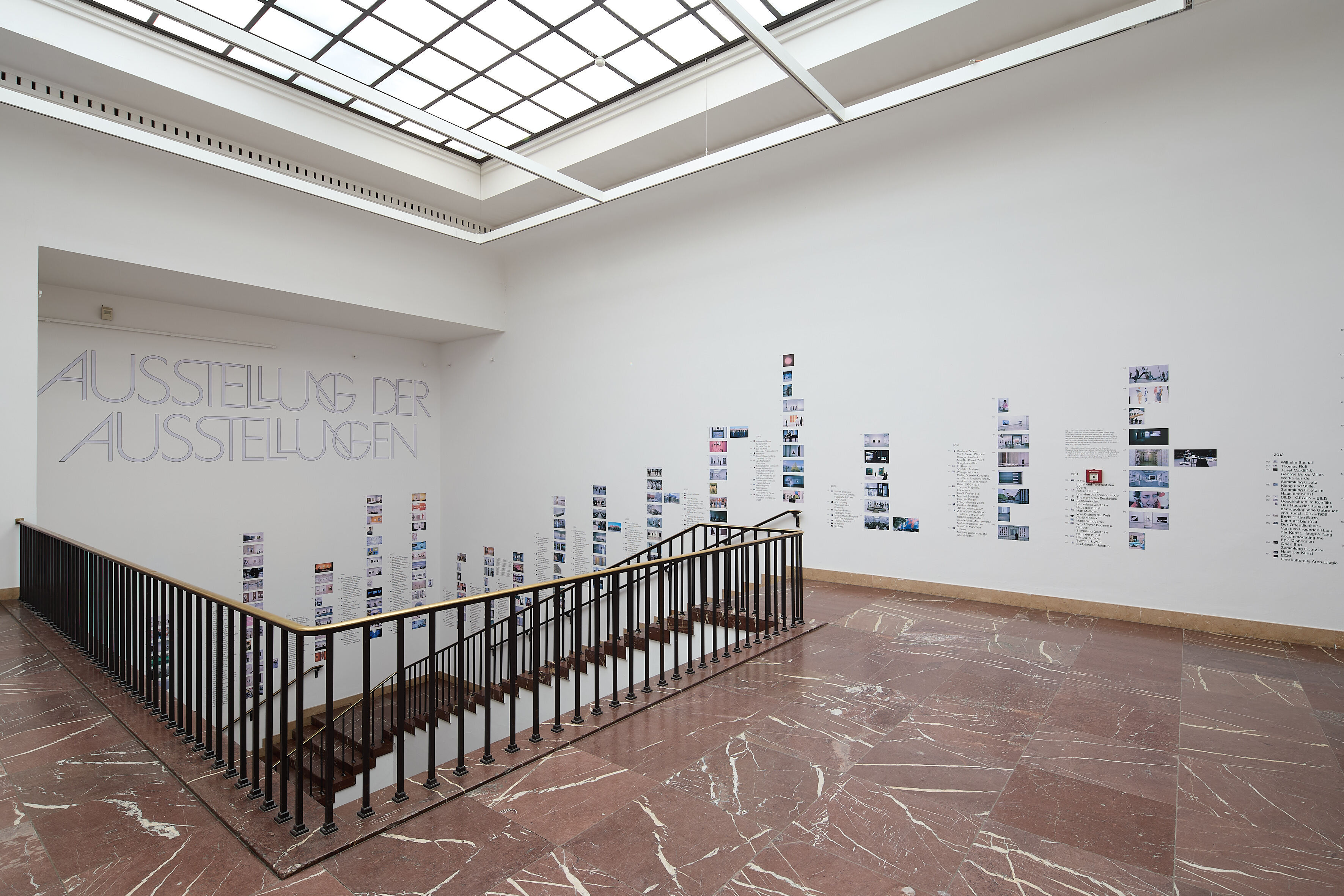
11. What is the history of Haus der Kunst?
1937 to 1945
The Haus der Kunst was inaugurated in 1937.
That was during the period of the Nazi regime.
In Germany, this was the period from 1933 to 1945.
At that time, not everyone had the same rights.
Many people were excluded:
- Because of their religion.
- Because of where they were born.
- Because of their sexuality.
- Because of a disability.
- Because of their political opinion.
These people were persecuted back then.
Many were murdered.
Back then, this building was called Haus der Deutschen Kunst.
This means: House of German Art.
There was an exhibition here every year:
The Große Deutsche Kunst-Ausstellung (Great German Art Exhibition).
Only art that fitted in with the politics of
the Nazi regime was shown.
The Nazis did not want to display pictures by Jewish artists.
And they didn't want to show any modern art.
For example:
No abstract paintings were allowed to be displayed.
Abstract means:
You can't identify any objects or people.
Many artists were excluded during this time.
They were not allowed to work in their profession.
They were not allowed to show their art.
The Große Deutsche Kunst-Ausstellung existed until the end of the Second World War.
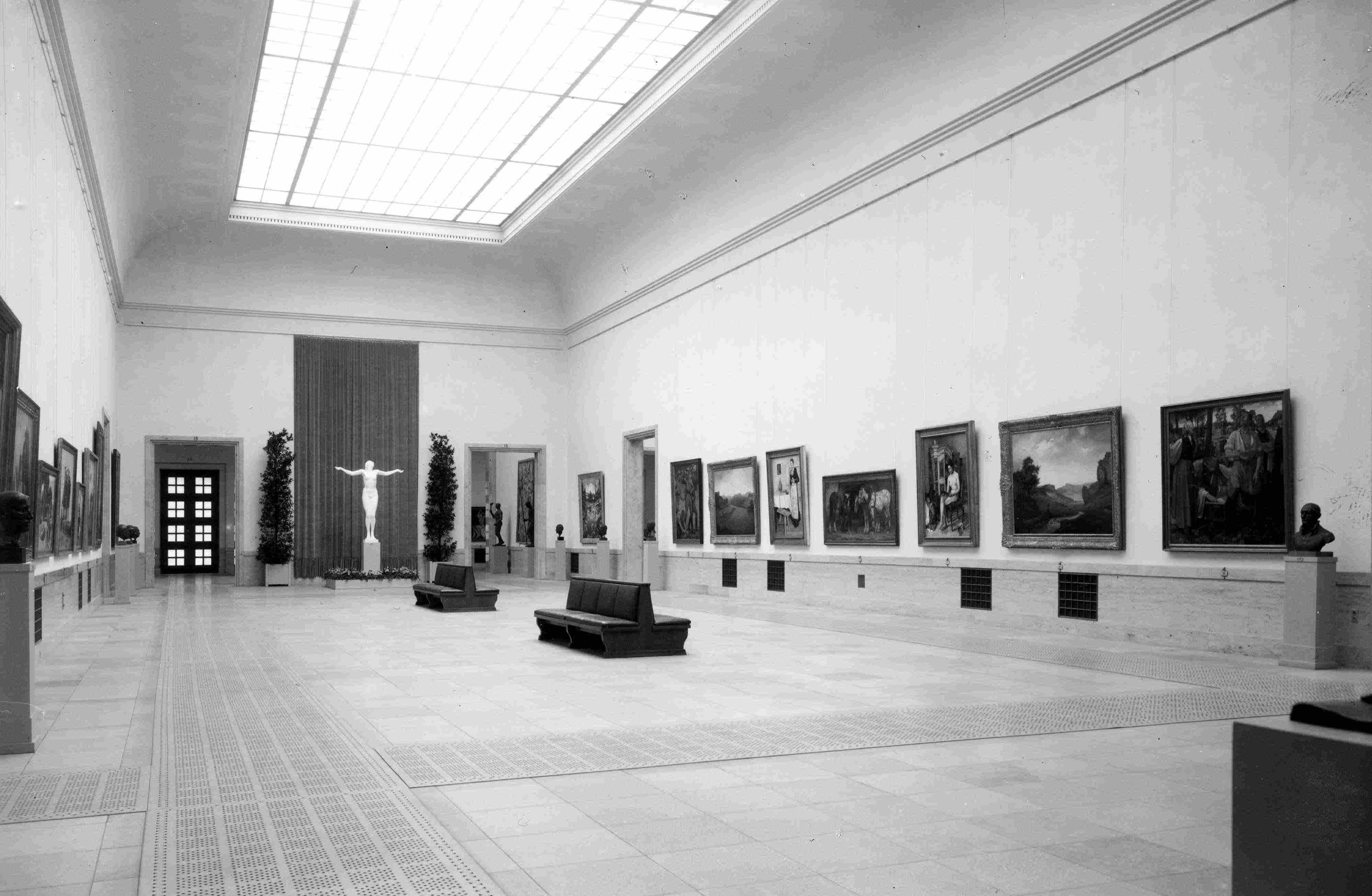
1945 to 1991
After the Second World War, the Haus der Deutschen Kunst was given a new name:
Haus der Kunst.
This marked the beginning of a new era for the museum.
Modern works of art were shown.
Art was shown that had been excluded under National Socialism.
This made the Haus der Kunst famous all over the world.
During this time, it was also under consideration:
If Haus der Kunst should be demolished.
Because it was a Nazi building.
And because it could be reminiscent of the ideas of the Nazis.
From that you can get:
This is how Germans deal with their history.
Many did not want to talk about the Nazi regime.
There were only a few exhibitions that also explained the history of this house.
From 1992
Stiftung Haus der Kunst was established in 1992.
Stiftung means Foundation.
A foundation wants to achieve something specific
It spends money on this, for example.
The aim of Haus der Kunst is:
To show today's art here.
Today, Haus der Kunst is known throughout the world as a centre for contemporary art.
It works with artists from many different countries.
It has become an important museum for contemporary art.
Das Haus zeigt viele verschiedene Arten von Kunst.
The house shows many different types of art.
And today the museum is engaged with its own history.
The artists deal with the history of Haus der Kunst in the exhibitions too.
Do you have any more questions?
Then give us a call!
Telephone: 089 – 211 27 113
Phone-times: Monday to Friday, 10 am to 5 pm
Or write us an e-mail.
E-Mail: mail@hausderkunst.de
We are looking forward to your visit!
Easy Read tested by people with learning difficulties
www.einfachverstehen.de
Member of the Easy Read Network
Pictures: © Lebenshilfe für Menschen mit geistiger Behinderung Bremen e.V.,
Draftsman Stefan Albers, Atelier Fleetinsel, 2013
Easy-Read-Sign: © Inclusion Europe
Quality mark for Easy Read: © Netzwerk Leichte Sprache e.V.